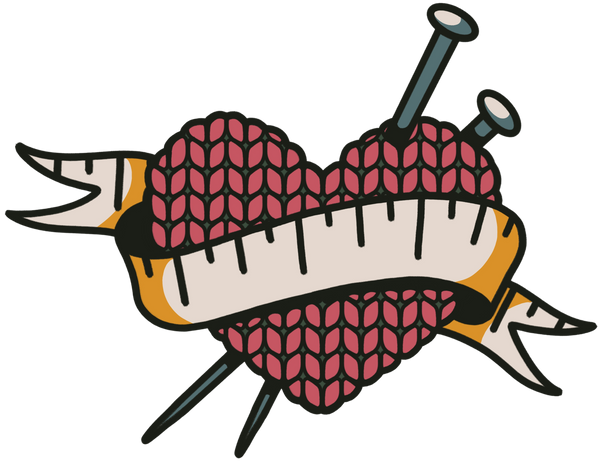
Choosing a Pattern: Dresses
Hi Friends! Bess here. You probably already know that I LOVE a handknit or crocheted dress pattern. So, it's quite a delight for me to see dresses trending on Craftstagram and lots of new patterns hitting the market.
Today, I'll walk you through the key points I'd look for in choosing a dress pattern to knit or crochet.
Want to go deeper? We've got an article on turning a sweater pattern into a handknit dress here. Paywall-free articles like these, and the One Wild Post, are paid for by our Ko-Fi subscribers. You can learn more about our Ko-Fi here.

Key fit points for handmade dresses
Dress patterns will follow familiar sweater constructions in the bodice. So, if the dress is a tank or a set-in sleeve, the armhole and cross shoulder measurements will be critical. Drop shoulder dresses will also rely on a cross shoulder, with a targeted amount of extra fabric (here at One Wild we include this target in the pattern). Raglan and circular yoke dresses will require neck shaping to fit best, and you'll want to check your upper chest measurement as well as your upper arm measurements for best results.
In addition to these key fit points in the upper body, dresses are (obviously) designed to go over your waist and hips. Humans are a lot more variable through waist and hip measurements than we may be in armscyes and shoulders. Luckily, adding hip shaping to a garment is not difficult in most cases, and this includes most dresses with traditional constructions.
Length is also a highly variable factor with dresses. While there is variance in torso lengths, a dress is more subject to height variability. Use the provided schematic to determine if the length of a garment is appropriate for you or if you'd like to lengthen or shorten it as you go. Many dress patterns will be worked with the skirt knit top down, allowing you to pause, block, and try on your garment as you go.
Choosing the right yarn for a dress
Dresses are HEAVY. Be wary of seamless sweater dresses knit in heavy yarns like superwash wool, alpaca, or bamboo. They are likely to stretch out of their intended shape. Sometimes, as in the case of the Therese Dress (pictured below), which is an elegant sack dress, this shapelessness is part of the design and can work with heavier plant yarns beautifully. My Therese Dress is in its third summer of wear with no problems.
In the case of my Jane Dress pattern (pictured above), I combined the use of seaming in the bodice with a seamless top down skirt to create structure. This allows this sweater dress to work well with heavier superwash yarns like the one I used.
Dresses will also wear more quickly in the bum as well as underarms and cuffs (like sweaters). Yarns that are more likely to pill will pill more in these areas and may be prohibitive to enjoying your handknit dress. Butt fuzz can reduce the glamorous aspirational feeling of a handmade dress for sure.

This dropped shoulder sack dress is knit with 100% tencel. UX Knitters made wonderful versions in bamboo and cotton blends. The shape of this dress withstands and is enhanced by the way these fibers wear.
Assessing the pattern
Before choosing a dress pattern, whether you'll be knitting or crocheting, here are some key points to consider:
- Is it size-inclusive? We recommend working with size-inclusive designers who offer sizes to fit up to at LEAST a 64" full bust measurement.
- Is the schematic available? These days, best practice for designers is to offer the schematic in the product information before checkout. This allows you to make sure a pattern will work for you with minimal modification.
- Is it well graded? This is harder to assess as a new maker, in fact, Jen has a whole class about assessing patterns (and we both offer one on ones on this subject). As you check the available schematic, full bust, waist, and hip measurements might increase by inches in each size, but you should see much smaller increases in measurements like the neck width or armscye depth. These are signs of intelligent grading practices.
- Do you love it? A whole sweater dress is a lot of knitting. Sure, a simple tank dress might not take too much longer than a sweater, but even a simple short dress is a labor of love. Do you see yourself wearing this dress?
Of course there are more considerations than these, so let's keep the conversation going! Go ahead and hit reply and tell me what you think of knitting or crocheting a dress!
Looking for more fit info? We've got lots of articles in the archive for you to explore.
Until next time, happy making!

